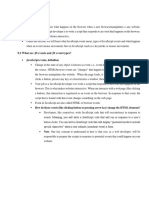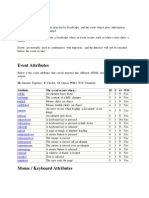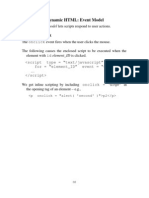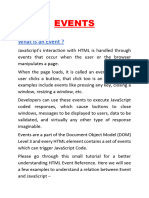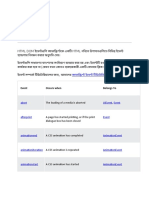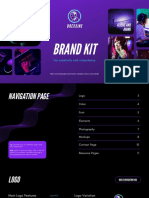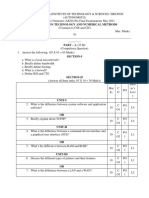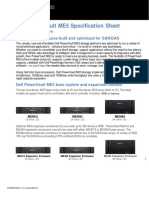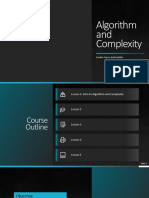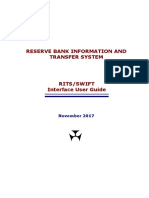0% found this document useful (0 votes)
51 views28 pagesCH 13-2
The document discusses JavaScript events and the event object. It provides details on:
1) The event object is passed as an argument to event handlers and contains information about the event.
2) Different browsers support the event object in different ways, so cross-browser event handling is discussed.
3) Various types of events are covered, including user interface events, mouse events, keyboard events, and more.
4) Examples are given for how to attach event handlers and access event object properties for different events.
Uploaded by
nyinyilynn163Copyright
© © All Rights Reserved
We take content rights seriously. If you suspect this is your content, claim it here.
Available Formats
Download as PPTX, PDF, TXT or read online on Scribd
0% found this document useful (0 votes)
51 views28 pagesCH 13-2
The document discusses JavaScript events and the event object. It provides details on:
1) The event object is passed as an argument to event handlers and contains information about the event.
2) Different browsers support the event object in different ways, so cross-browser event handling is discussed.
3) Various types of events are covered, including user interface events, mouse events, keyboard events, and more.
4) Examples are given for how to attach event handlers and access event object properties for different events.
Uploaded by
nyinyilynn163Copyright
© © All Rights Reserved
We take content rights seriously. If you suspect this is your content, claim it here.
Available Formats
Download as PPTX, PDF, TXT or read online on Scribd
/ 28






